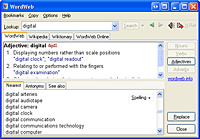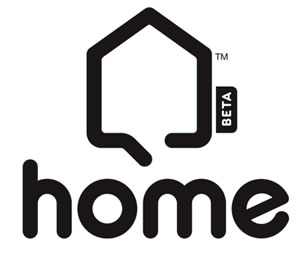 Sony is gearing up to launch a rival to popular online virtual world Second Life later this year. Playstation Home is a massively-multiplayer online game (MMO) in which a user adopts an avatar (a digital character which represents them) which they are then free to move around a virtual world, interacting with other avatars. In their Developer FAQs (PDF), Sony describes the project:
Sony is gearing up to launch a rival to popular online virtual world Second Life later this year. Playstation Home is a massively-multiplayer online game (MMO) in which a user adopts an avatar (a digital character which represents them) which they are then free to move around a virtual world, interacting with other avatars. In their Developer FAQs (PDF), Sony describes the project:
Home™ is a real-time 3D, networked community that serves as a meeting place for PLAYSTATION3 (PS3) users from around the world, where they can interact, communicate, join online games, shop, share content and even build and show off their own personal spaces.
It looks like Home may well be going beyond Second Life in a few areas. Gaming is the most obvious, perhaps unsurprisingly given the link to the Playstation. Users will be able to play various different arcade games around the virtual world through their avatars. So I might decide to go for a virtual drink in a virtual pub with my virtual friends, and I would then be able to have a virtual game of pinball on a virtual pinball machine. You get the idea.
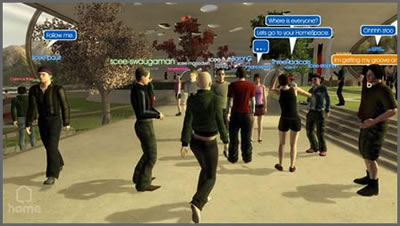
Probably more interesting is the ability to meetup with someone in Home, and then play a Playstation game with them over the Internet. Whilst the playing over the Internet idea is far from new, it is a unique way to approach it. It adds a social dimension to game play (along with the included voice chat) which could possibly make Internet gameplay far more addictive.
Sony are also taking user generated content seriously; as a user of Home I will be given, for free, an apartment, which I can then hang my own pictures up in and customise to my heart’s content, presumably buying various virtual items from Sony to add to my dream virtual home.
UGC is absolutely crucial for such games; it creates a feeling of ownership over the game for every individual user, making it far more sticky.
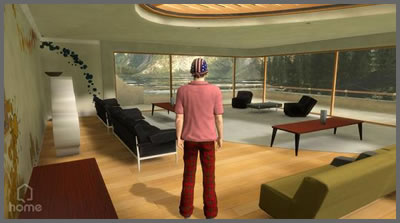
Commerce is not being overlooked. Sony state in their FAQs that:
Home prioritises community and entertainment over ecommerce. That said, we believe that there will be ample opportunities for businesses and individuals alike to generate significant revenues from the Home platform.
This is similar to the approach taken by Second Life and other MMO games, and it makes a lot of sense. Sony, and others who set up business in Home, will be able to make vast sums of money selling things which do not really exist and which cost little or no money to develop. In the modern world of games consoles being sold at a vast loss, manufacturers are looking at every possible avenue to create additional revenue streams.
Second Life has been hyped enormously, with pop concerts and press conferences from real bands and companies happening exclusively within Second Life. Despite this, I have always held Second Life in the greatest disdain; I spent about 15 minutes playing it some time ago and was struck by the pointlessness of it all. Whilst there are many, many people who are fans of such games, I have rightly or wrongly assumed that they are either people without a social life, who are fascinated in the technology or who are only able to create meaningful friendships through such a program.
I do not, however, treat Playstation Home with the same disdain. It seems that Home has a purpose, namely gaming, which should give the whole virtual world meaning. If I were able to afford a Playstation 3, I think I might well enjoy a quick stroll around Home to find someone to play against, and then actually playing the game with them. In Second Life all that is possible is the stroll, and I think that if virtual worlds are to live up to the hype, they have to offer more than a stroll.
[Engadget was a useful source]
Huw Leslie is editor of UK-based Web 2.0 and software blog Gizbuzz. He is the co-founder of the Oratos Media technology blog network, and his personal blog is For Crying Out Loud!
 Although some may already feel that walking around Brixton is akin to taking a stroll around another planet, we began to think we might have been transported to a parallel universe when we spotted bright garish yellow billboards appearing all around town exclaiming, “THEY WANT YOUR POD!”
Although some may already feel that walking around Brixton is akin to taking a stroll around another planet, we began to think we might have been transported to a parallel universe when we spotted bright garish yellow billboards appearing all around town exclaiming, “THEY WANT YOUR POD!” In smaller text underneath the screaming headline, “BEWARE” the sign goes on, “Street robbers are targeting persons using mp3 music players in this street!”
In smaller text underneath the screaming headline, “BEWARE” the sign goes on, “Street robbers are targeting persons using mp3 music players in this street!”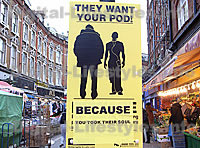 Although the sign doesn’t actually tell you what to do to prevent being ‘jacked’ (
Although the sign doesn’t actually tell you what to do to prevent being ‘jacked’ ( Last week Microsoft went on a PR offensive to promote the new format, despite them having
Last week Microsoft went on a PR offensive to promote the new format, despite them having  In the interview with German weekly magazine Focus, published today, she poses the following question, “”Do you think it’s fine that a CD plays in all CD players but that an iTunes song only plays in an iPod?” It’s followed by a couple of words that are going to make uncomfortable reading for Apple, “I don’t. Something has to change.”
In the interview with German weekly magazine Focus, published today, she poses the following question, “”Do you think it’s fine that a CD plays in all CD players but that an iTunes song only plays in an iPod?” It’s followed by a couple of words that are going to make uncomfortable reading for Apple, “I don’t. Something has to change.” This just feels wrong on just about every level we can think of, but in an attempt to reach out to Da Yoot, the US Army have created a slick and highly polished MySpace recruitment site.
This just feels wrong on just about every level we can think of, but in an attempt to reach out to Da Yoot, the US Army have created a slick and highly polished MySpace recruitment site. A warning next to the psychopathic-looking Sgt Star warns, “The information you enter is to be used only for recruiting Soldiers into the U.S. Army and the Army Reserve.”
A warning next to the psychopathic-looking Sgt Star warns, “The information you enter is to be used only for recruiting Soldiers into the U.S. Army and the Army Reserve.”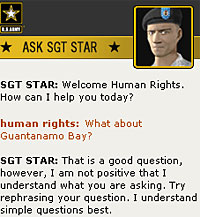 We apologised: “OK. Sorry. We want to go to Iraq and bomb some soft Johnny Foreigners back into the Stone Age in the name of peace.”
We apologised: “OK. Sorry. We want to go to Iraq and bomb some soft Johnny Foreigners back into the Stone Age in the name of peace.”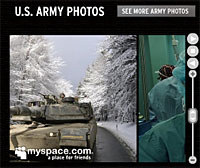 Clearly a sizeable wad of defence budget has been thrown at the slick game, which purports to offer realistic battlefield scenes (although we couldn’t find any options to rain friendly fire on Brit troops and then try and cover up the investigation afterwards.)
Clearly a sizeable wad of defence budget has been thrown at the slick game, which purports to offer realistic battlefield scenes (although we couldn’t find any options to rain friendly fire on Brit troops and then try and cover up the investigation afterwards.)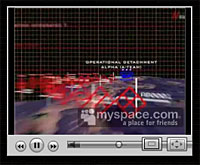 Of course, there’s sound business reasoning behind the US Army shoving its shiny size nines onto a social networking site like MySpace, with the site able to interact with the community, make friends and receive comments and – possibly – make the Army look vaguely cool and enticing.
Of course, there’s sound business reasoning behind the US Army shoving its shiny size nines onto a social networking site like MySpace, with the site able to interact with the community, make friends and receive comments and – possibly – make the Army look vaguely cool and enticing.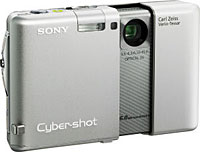 Digital camera heavyweights Sony have rolled out their first wireless Cyber-Shot digital camera, the 6-megapixel Cyber-shot DSC-G1.
Digital camera heavyweights Sony have rolled out their first wireless Cyber-Shot digital camera, the 6-megapixel Cyber-shot DSC-G1.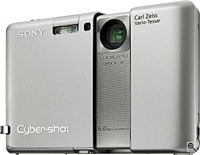 There’s also a memory slot onboard for storing yet more photos, but Sony are sticking with their less widespread Memory Stick Duo/Memory Stick PRO Duo format, which can now store up to eight gigabytes.
There’s also a memory slot onboard for storing yet more photos, but Sony are sticking with their less widespread Memory Stick Duo/Memory Stick PRO Duo format, which can now store up to eight gigabytes.
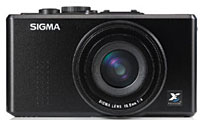 Sigma have announced the full details of their new DP1 camera, a high end point’n’shoot digital camera packing a hefty 14 megapixels resolution with a full size image sensor.
Sigma have announced the full details of their new DP1 camera, a high end point’n’shoot digital camera packing a hefty 14 megapixels resolution with a full size image sensor.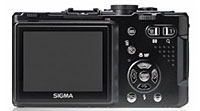 Camera controls
Camera controls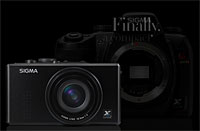 The 28mm fixed lens is disappointingly slow at just f4, but this may be compensated by improved high ISO performance.
The 28mm fixed lens is disappointingly slow at just f4, but this may be compensated by improved high ISO performance.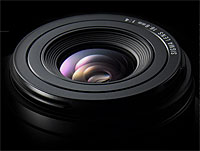 Specifications
Specifications A pretty staggering number, even when you realise that it includes all of the downloads and possibly all upgrades of the software (* We’re in the process of checking this with Skype HQ).
A pretty staggering number, even when you realise that it includes all of the downloads and possibly all upgrades of the software (* We’re in the process of checking this with Skype HQ). Gordon Brown has announced that a new labelling system for media content is in the works, designed to help parents protect their children from dodgy digital content.
Gordon Brown has announced that a new labelling system for media content is in the works, designed to help parents protect their children from dodgy digital content.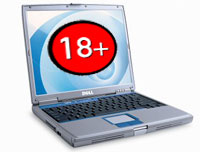 As part of the scheme, Ofcom will introduce common labelling standards covering cinema, TV, radio, computer games and the internet.
As part of the scheme, Ofcom will introduce common labelling standards covering cinema, TV, radio, computer games and the internet.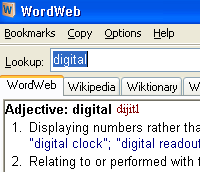 We rather liked the nifty
We rather liked the nifty  Full Windows Vista support has been bolted on, with the authors claiming that the program now comes with “many thousands of new senses, synonyms and clarifications.”
Full Windows Vista support has been bolted on, with the authors claiming that the program now comes with “many thousands of new senses, synonyms and clarifications.”